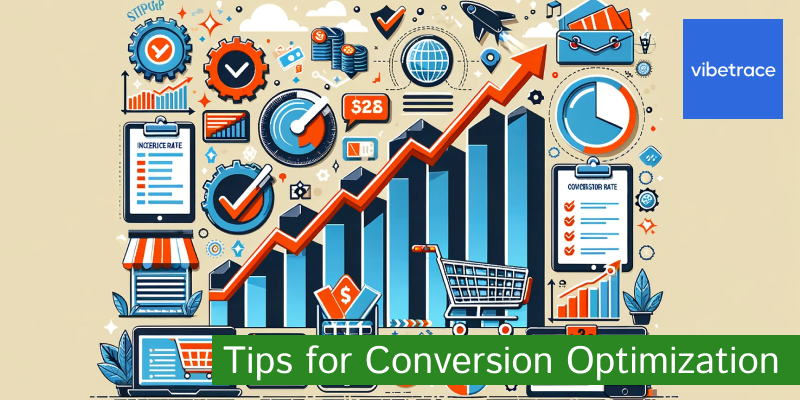Starting as the latest marketing buzzword over a decade ago, conversion rate optimisation (CRO) has become integral to the way retailers do business online.
Optimising your visitor-to-buyer conversions can increase your annual revenue and potentially improve your market position. But how do you generate better conversion metrics?
Begin by picking a strategy relevant to your business and setting measurable goals. Consider your unique selling point and create an ecommerce website tailored to your target consumers. Conversion rate optimisation means changing consumer behaviour for more productive interactions with your online store.
By 2023, ecommerce sales look to be worth some $6.542 globally. Increase conversion today and take advantage of this opportunity to grow your customer base and improve your profitability.
Read on for everything you need to know about upping your conversion rate—from what it is, to how to calculate it, tips to increase it, and more.
What is ecommerce conversion rate?
Conversion rate is typically a measure of how effectively your ecommerce store converts site visitors into paying customers.
However, it doesn’t necessarily have to be measuring a quota or setting a benchmark for a particular number of purchases. Conversion can mean simply eliciting the desired response from a customer to your call-to-action (CTA).
For example, if your customers fail to use coupons or promotional discounts, your CTA would encourage them to input offer codes and conversion would measure the increase in discount usage.
Alternatively, if cart abandonment is an issue, your CTA would prompt site visitors to check out their shopping carts and your conversion goal would be to reduce the number of abandoned carts over a set period of time.
How to calculate ecommerce conversion rate
Conversion rates are calculated as the number of visitors to your ecommerce site divided by the total conversions over a set period.
So, if your online store is getting 10,000 visitors and 100 conversions over your chosen timespan, your ecommerce conversion rate is 1%.
Pretty simple, right?
What is a good ecommerce conversion rate?
While online giant Amazon has a whopping 74% conversion rate, an average conversion rate is around 1-2%. 2% tends to be the ecommerce standard and should be your aim for visitors taking your desired actions.
However, a good conversion rate will vary depending on a business’s current average. If you’re functioning at 1%, even a bump of 0.5% will be a big deal for your bottom line.
Why is conversion rate important for ecommerce?
Understanding your conversion rate and how to optimise it can help you reach larger audiences, generate leads, increase sales, and provide a better overall user experience to your site visitors.
Healthy conversion ensures that your customer base is constantly increasing and that you are making a good return on investment (ROI). It also means you’re getting the most out of your marketing campaigns and indicates an overall effective marketing strategy.
Conversion metrics should give you better perspective as to how your company is performing and therefore help you make key business decisions. For example, you might choose to reallocate resources or reassess marketing budgets based on your current conversion rate.
Ultimately, conversion rate improves your understanding of online buyer behaviour and works to reduce your customer acquisition costs.
20+ tips to increase your ecommerce conversion rate
1. Use high quality images and videos
Product images and videos are one of the most important design features of an ecommerce website. Without a physical retail experience, it’s up to your product photography to convince shoppers they need what you’re selling.
The better the image quality, the better impression you are giving to potential customers and the more confident they’ll feel about making a purchase. Make sure your media matches your company aesthetic and brand image. For example, if you’re selling a luxury product or service, your image quality should reflect that.
Consider colour control settings and formatting to help online shoppers visualise your product better and increase conversion rates.
See below how Apple uses movement and colour to produce enticing imagery that is sure to captivate consumers:
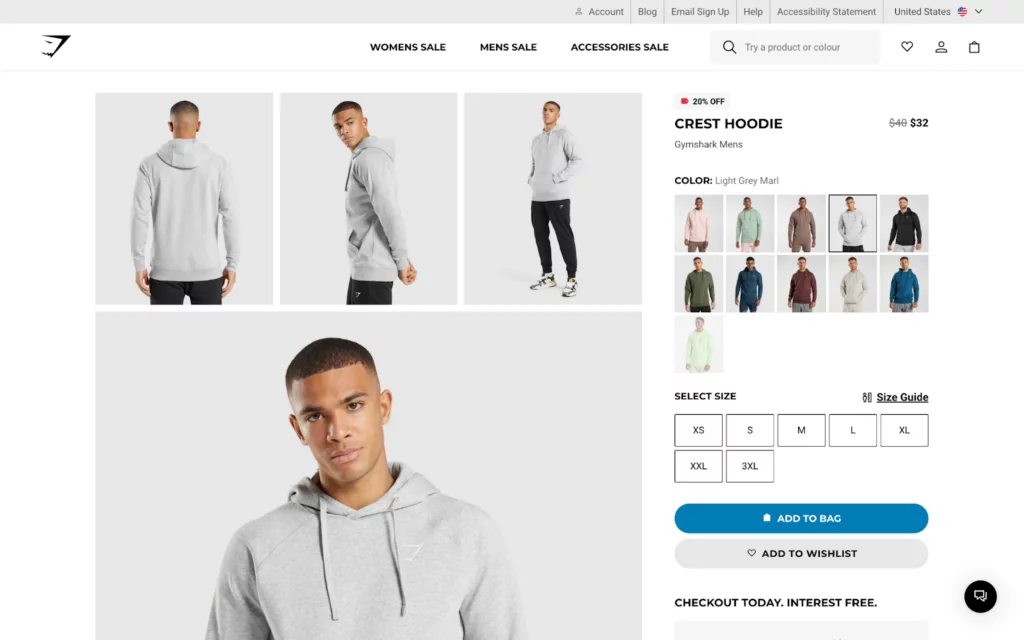
2. Offer free shipping
When it comes to online shopping, few things incentivise a purchase like free shipping. In fact, 53% of internet users worldwide cite free shipping as their main reason for buying a product when shopping online.
Extra costs like shipping and handling are often hidden expenses when consumers are browsing online retailers. Increasing the total price of orders at checkout drives shopping cart abandonment.

If free shipping will have too big an impact on your turnover, the solution could be a small increase in the price of goods across your ecommerce store, to cover the cost of delivery. This way, consumers will see the total cost of their order upfront.
Another way to boost your conversion rate with free shipping is to offer it over a certain price point. For example, you might offer free standard shipping for orders over £20 and free expedited shipping for orders over £50. Not only does this prevent cart abandonment at checkout but it encourages your customers to spend more, increasing average order value.
3. Provide competitive pricing
To stay competitive in a crowded marketplace you either have to be offering something unique or selling your products at a lower than average price. In the ecommerce era, consumers are more price-conscious than ever and are willing to shop around for a better deal elsewhere.
In the six-month period between October 2020 and March 2021, consumers have reportedly become 59% more price-conscious. However, competitive pricing doesn’t mean resolving to drastically undercut the market leaders. That’s pretty unsustainable.
Pick your price point intelligently based on your profit per unit value and the price of competitors’ offerings. Consumers expect reasonable prices, not unrealistic ones, and are wary of offers that are too good to be true.
The best pricing strategy to drive conversion rate is a flexible one. It should develop and adapt over time and based on market changes. For example, if a close competitor’s ecommerce platform is offering a limited-time price reduction on certain product categories, your own site should consider matching prices for the prescribed period.
4. Optimise checkout process
For the best conversion, your online shop should streamline the checkout process. This means making it as easy as possible for a site visitor to navigate the sales funnel—from browsing product pages and adding items to the basket, to checking out.
A confusing, slow, or glitchy checkout will deter shoppers from converting their shopping carts into purchases. Simplify payment pages and make sure online forms are as user-friendly as possible.
You could even offer predictive entry or auto-filled delivery information for registered customers. Anything to make the process as hassle-free as possible and therefore up your conversion rate.
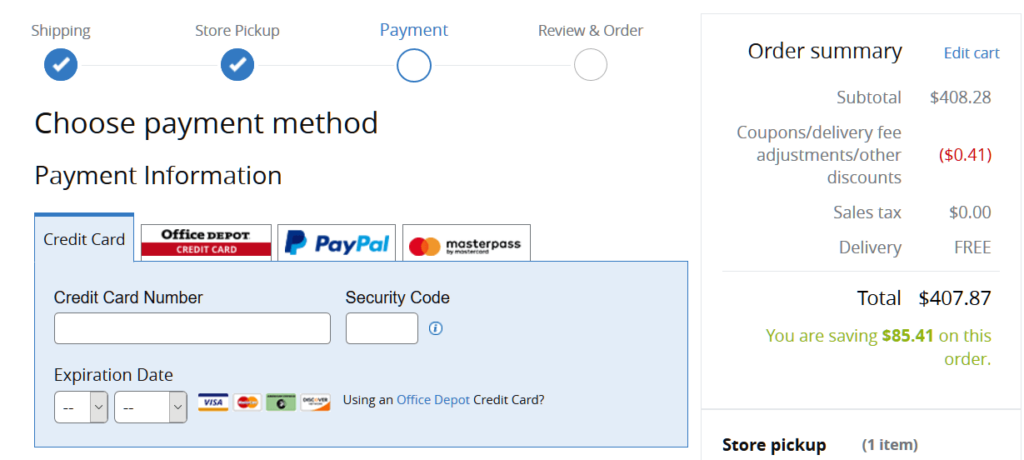
One-click checkout methods and CTA buttons that let users ‘buy it now!’ can also help to capture those impulse purchasers and are a great way to appeal to new customers.
With mobile commerce sales now accounting for 72.9% of online purchases, it’s essential your store is built to work across a range of mobile devices. A mobile-friendly UI can also encourage conversion as features like fingerprint scanning, digital wallets, and credit card scanning all speed up payment procedures.
5. Allow guest checkouts
Requiring your visitors to register before they can place an order on your site puts a major barrier in the way of purchases. The option to checkout as a guest and avoid account creation procedures provides customers with a convenient experience that integrates into their buying journey more seamlessly.
The less work you ask your users to do in order to make a purchase, the more likely they are to follow through with it and convert from site visitors to paying customers.
Present your guest checkout in plain sight so potential customers know that it’s an option before they proceed to purchase. Take a look at how Canon positions their guest checkout option right next to the option to sign in:
6. Live chat software
A live chat that’s available to your website visitors during business hours (or even better, 24/7) can increase conversion by improving the immediacy with which customers receive answers to their queries.
For example, a prospective customer might reach out to ask about the fit of a clothing item before committing to a purchase. In this instance, your live chat agent can answer the query instantly, saving time spent contacting customer service via email.
Live messaging thus speeds up conversion by guiding users to the checkout more efficiently. Not only this, but you can also use live chat to help familiarise site visitors with useful product information and sales offers.
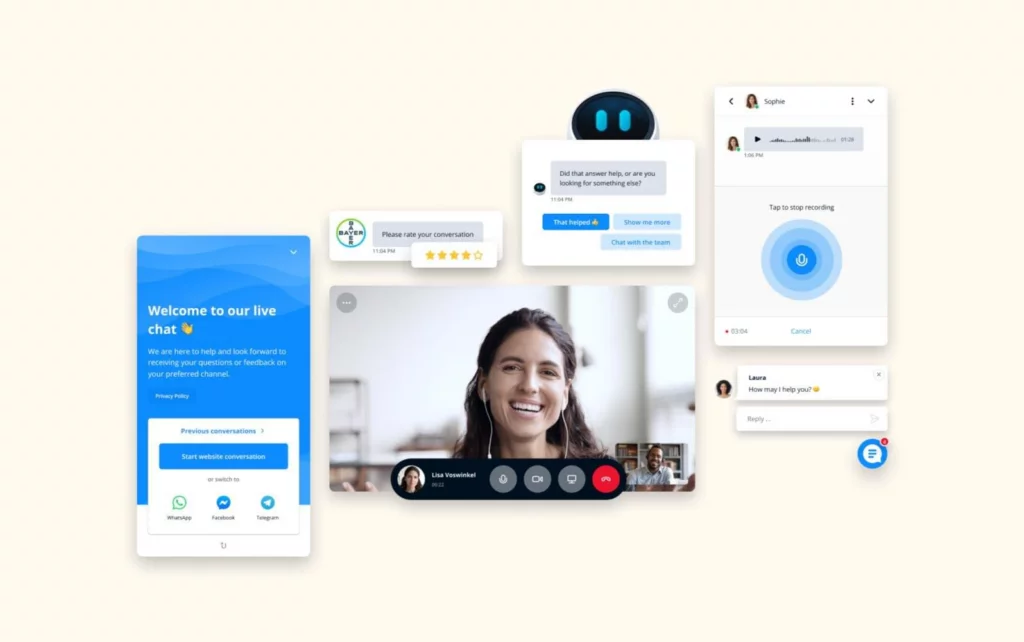
Live chat means using a real live human being for interactions, and is the way to go. Chatbots are automated facsimiles that fall way short of the CX you want to offer.
They’re often only able to send predetermined responses based on trigger words, which likely won’t answer the question effectively. A live agent has much more chance of resolving the query, and ensuring the customer doesn’t become frustrated.
7. Ensure your site is trustworthy
Trust is a serious aspect of ecommerce conversion. If your online store is missing vital trust signals, consumers are likely to shop elsewhere. More trust equals lower bounce rates and more converted orders.
You can add a few components to your site that will show its safety. For example, adding brand logos for past clients can demonstrate your credibility.
Incorporate client logos to compliment your brand aesthetic, like this:
Online buyers also want to know that your website can be trusted with their payment information. Make your visitors aware that your transactions are handled by a trusted payment service provider. Mentioning security payment gateways in your homepage footer and adding security badges like SSL certificates can also assure customers that their credit card details are protected.
Money-back guarantees are another way to promote trust. They reduce the risk of purchase for first-time customers and thus quickly increase your conversion rate.
8. Make it easy to navigate your site
Fundamentally, if a user can’t find what they’re looking for on your site they’ll leave without purchasing it. From your landing page, your site navigation needs to be obvious and simple to use.
Keyword searches can promote product findability, with pre-filling options for popular search terms. Using categories and product breakdowns can also help your visitors find their desired product more easily.

Consider horizontal navigation in favour of vertical, to improve the visibility of your drop-down menus. You should also cut back on unnecessary detail and use unambiguous text to steer shop browsers in the right direction.
If the end goal is conversion, all your site navigation features should work together to move visitors towards the checkout in as few (and easy to follow) steps as possible.
9. Provide detailed product descriptions & snippets
Creating unique and detailed product descriptions helps clarify purchasing decisions. Essentially, it’s a product pitch, and to stand out online you need to use the same enthusiasm you would in real life.
List the product’s features and explain how it operates. How can you expect a shopper to know all the benefits of your product without telling them? Here, you can even point out why your product stands apart from competitors.
Be creative with your copy and adjust your tone to match your target customers. For example, if you’re writing for a younger audience you might use more casual language and include some pop culture references.
See how well Firebox (a gifts and gadgets retailer) captures just the right voice to appeal to its customers:
While rich snippets can give an immediate boost to your search engine optimisation (SEO) and drive traffic to your website, a unique and detailed product description will be what converts visitors into paying customers.
10. Showcase customer reviews and social proof
Nine out of 10 consumers read reviews before making an online purchase, and it goes without saying that positive customer reviews are persuasive.
Testimonials, case studies, and reviews all contribute to ecommerce conversion. They display ‘social proof’ that verifies the claims you’ve made about a product and reinforce its quality or necessity. Giving the perspective of a customer, they build trust and add credibility to your brand.

Social media is another really useful tool for showing social proof. Add your various follower counts to your storefront and include links back to your pages so visitors know they’re browsing an authentic website.
11. Give great product guarantees and a return policy
A fear among consumers shopping online is that their purchased product won’t match the one displayed online. Product guarantees alongside return and refund policies alleviate this fear and therefore improve conversion rates.
Consumers are more likely to invest in a high-value item like a laptop or TV if the retailer can offer some form of warranty that ensures free repairs over a set time period.
A consumer-centric buying and returning experience influences both sales and long-term loyalty. Advertising a great return service lets your shoppers know they can act on their buyer’s remorse if need be.
12. Make it easy to contact you
As above, customer anxiety is alleviated when you can assure them that, should a problem arise with their purchase, it can be fixed. Displaying contact information prominently lets your visitors know that you’re available to help and thus increases conversion.
Providing a range of support options makes it easy for website visitors to reach out and adds authenticity to your ecommerce business.
13. Deliver valuable content
Adding additional value or functionalities to your website, beyond its ecommerce capabilities, can improve your website’s visibility in a competitive industry. Blogs, videos, tutorials, and even online games can boost the engagement of your target audience and also drive organic search engine traffic.
You shouldn’t underestimate the importance of the user experience when it comes to conversion rate. If a customer has enjoyed their time on your page, they are more likely to return to you for another purchase rather than go to a competitor.
14. Measure and improve conversion rate success
All these changes to optimise your conversions should be continuously measured and monitored so you can see in real-time which are having the most significant impact. With the relevant metrics, you can then alter your approach to best effect.
Services like Google Analytics can be employed to track your website traffic and customer purchases, and report conversion statistics.
Want to be up to date with Marketing?
Subscribe to our Retail CX newsletter!

Stay connected with what’s really important to optimize your digital revenues.
By clicking the button, you accept our Terms & Conditions. Also you will need to confirm your email address.
15. Try A/B testing
An A/B test or split test is a practical way to find out if your ecommerce website has any usability issues. It compares two versions of your site to decide which performs better for a given business metric.
For example, if you were planning a change of layout, you could test your new design against the old one to work out which one lets your visitors browse the site more easily and results in better conversion.
Alternatively, if you were looking to simplify your checkout forms, you could see how those changes would affect purchase numbers.

Alterations to essential ecommerce features like online checkout can be high risk. Bugs and glitches can impede users in completing order processes and reduce your conversion percentages. With A/B testing you can identify issues before changes go live and reduce the risk of a negative user experience.
16. Personalise the customer experience
Offering a personalised shopping journey to your site visitors is an exciting approach to optimisation and conversion that is becoming increasingly popular. With the growing number of choices available to online shoppers, personalisation can be a key differentiator, elevating the customer experience.
Curated web content, offers, and product recommendations based on demographics, customer histories, and data insights increase the likelihood of making sales. Not only this, it shows your shoppers that you value them and understand their specific needs.
In a recent survey, KPMG found that in 19 out of 27 markets, personalisation was the leading driver of customer loyalty. Targeting customers with highly relevant engagements can inspire their purchase decisions and help recreate the personal nature of an in-store experience online.
Consider a tool like Digital Assistant to connect with customers, provide customised support, and improve your conversion metrics. Leave a positive lasting impression by engaging with your customers like you’re right there with them.
17. Show customer progress
Including a progress indicator on your checkout pages can make the process clearer and easier, showing how much more time is needed in order to complete a purchase.
Showing the various stages gives customers a frame of reference for how long the checkout process will take before they begin, setting expectations and avoiding cart abandonment.
A progress bar can also be used to show customers how far they are from unlocking an extra benefit, like free shipping or a gift with purchase. It’s an effective way to incentivise spending a certain amount and encourage customers to complete their order.
18. Optimise your site speed
Conversion rate has a greater potential to improve, the faster your site loads. The first few seconds of browsing time are critical to conversion and if your site runs slowly, you risk losing potential customers to competitors.
In fact, just a 100-millisecond delay in your website load time can hurt your conversion rates by 7%. With this in mind, it’s worth evaluating your site’s various page weights to optimise their speed and make sure the user experience is as smooth as possible. It could even benefit your search engine rankings, with some web platforms considering speed in their indexing.
An easy way to optimise your site speed is to reduce image rendering times. Make sure all your images are an appropriate size (typically under 1000 pixels) and eliminate unnecessary images or animations taking up precious loading time.
You could also reduce the number of web fonts your site uses. Not only do they decrease site speeds but they’re typically designed for desktop and render inconsistently on mobile devices.
Finally, you want your database server running as quickly as possible. To increase speed, enable web caching so that copies of your web server can be stored in different locations, load from the closest server when they are accessed, and therefore save visitors those all-important seconds.
19. Recover abandoned carts
Sometimes customers forget or lose grip of their shopping carts and need a gentle reminder that their goods are waiting for them at the checkout. With email marketing or remarketing, you can let potential customers know that you’ve recovered their basket for them.
Sending a reminder can often help a customer pick up where they left off, encouraging them to revisit their order and complete the purchase. Your reminder email should have an eye-catching subject line and can even include a discount code or free shipping offer to further encourage conversion.
Think about your timing as well.
If a visitor has abandoned their cart, chances are they were distracted or busy when they were creating their order. Don’t send your email too soon. Your customer might still be preoccupied, and you don’t want to seem pushy. An email a day or so later is more likely to recapture their attention.
20. Create a sense of urgency
Nothing speeds up conversion quite like creating a sense of urgency. Here, you might let a customer know that the item they have in their basket is a hot-ticket item, that it’s limited stock, or that there’s a certain supply available. Basically, you want to create a fear of missing out.
With urgency, you’re putting a time limit on your customer’s orders and prompting them to check out asap. You can also do this with offers, discounts, and coupon code expirations.
Let a customer know that ‘20% off is ending soon!’ or that it’s their ‘last day for free shipping!’. If a product will cost more later, potential customers are more likely to bite the bullet and complete their order today.
21. Offer diverse payment methods and delivery options
Optimising your checkout pages to increase conversion is all about making it as simple as possible to complete a purchase.
If you can offer a customer’s preferred payment option, it’ll speed up the process because they’ll be able to enter their details automatically. Payment gateways like PayPal and Apple Pay can drive sales and create a positive buying experience.
International options for both payment and delivery can also improve your conversion rates. As an ecommerce business, you can access audiences that retailers can’t, so your website should take advantage of that. Ensure your site is compatible with a range of currencies and offer various delivery options to suit your customers’ needs.
If you have the financial flexibility to offer payment in installations, do it. Giving your customers the ability to pay for your products over time translates to bigger and more frequent purchases.
22. Enhance site design & copy
Alongside all these other strategies, simply having a visually appealing website design and persuasive copy will keep your browsers engaged and make them more likely to move forward with a transaction.
At first glance, your site should be intuitive to navigate and provide a comfortable reading experience. Break up heavy text pages with images and negative space. Make sure your call-to-action buttons are easily spotted and that landing pages make it easy to go from page to page.
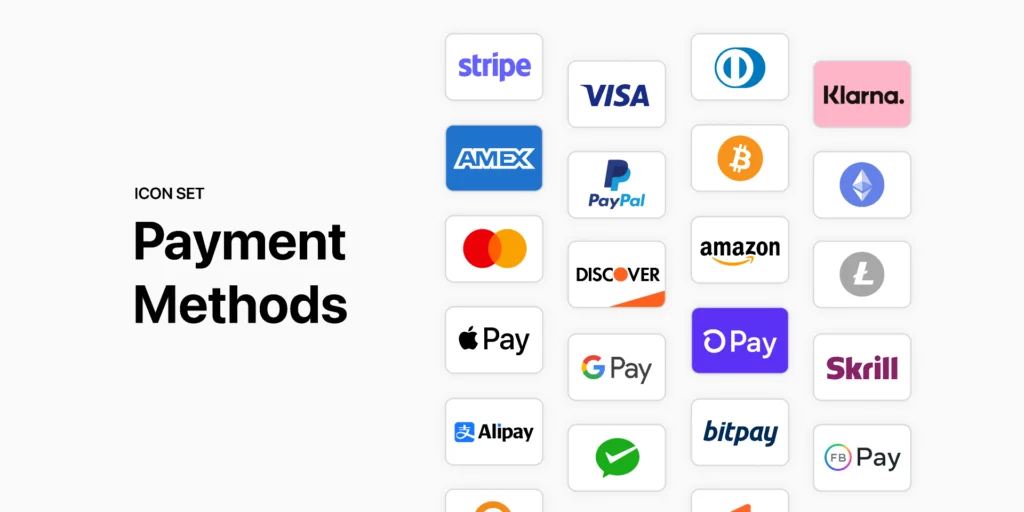
A strong design that evokes your brand and is recognisable will make your ecommerce store memorable and encourage return visits.
Instead of using generic pop-ups, you can improve engagement and conversion with Ve’s Digital Assistant. The tool picks up on exit-intent and gently encourages visitors to stay on the site with personalised interactions.
23. Deliver stellar customer support
Robust customer support makes your site visitors feel more comfortable making a purchase from your website. It’s also more likely to turn one-time buyers into repeat customers.
When a customer reaches out, it’s important you resolve their query quickly. Customers are more likely to purchase from a competitor the longer problems go unresolved.
When a complaint is left publicly, for example on a social media page or forum, it’s especially important to provide an immediate response in order to protect your brand reputation. This will also make it known that your company prioritises customer experience, and you’ll be rewarded with increased conversions.
How can we help boost your conversion rate?
Once you’ve decided on a strategy to increase your ecommerce conversion rate, Digital Assistant can help you achieve your goals through a combination of personalisation, Guided Selling, and digital revenue optimisation.
Offering customer personalisation promotes consumer loyalty and Ve simplifies the process with rule-based segmentation and algorithmic recommendations. Through a blend of customer knowledge and real-time session activity, the Digital Assistant provides you with all the best tools for expert customer targeting and triggering.
It’s also a flexible solution that can scale with your business and respond to the pace of change in digital commerce.
Features like market enablement, experience support, and response generation ensure ongoing engagement between brands and website visitors. Gathering and analysing user feedback and matching content to consumers’ online interactions ensures you’re always meeting customers’ needs.
Optimisation, through data and analytics, performance testing, and measuring and reporting means you’re always on top of consumer demands and responding to them productively.
With tools like A/B and multivariate testing and custom reporting options, your website can stay ahead of trends and provide consistently positive user experiences, optimising your conversion rate.
Bring buyers back
Retargeting – When combined with our onsite product, Digital Assistant, we re-engage in a more effective way than simply paying for clicks.
Remind customers of the stuff they wanted on your site, with timely automations that multiply your sales.
Conclusion
Today, customers have more options in their online purchase decisions than ever before. To stand out from the crowd and up their conversion rates, ecommerce websites have to provide seamless, high-quality, and personalised online shopping experiences.
Implementing the strategies above will help you optimise your metrics and create an ecommerce platform head and shoulders above the rest.
Remember, customer expectations are always changing and so conversion rate optimisation is an endless journey. You have to continually make improvements to maximise your results.
Employing a Digital Assistant like Ve’s will help you understand your site visitors’ changing needs and preferences and continually inspire them to convert from browsers to paying customers.

